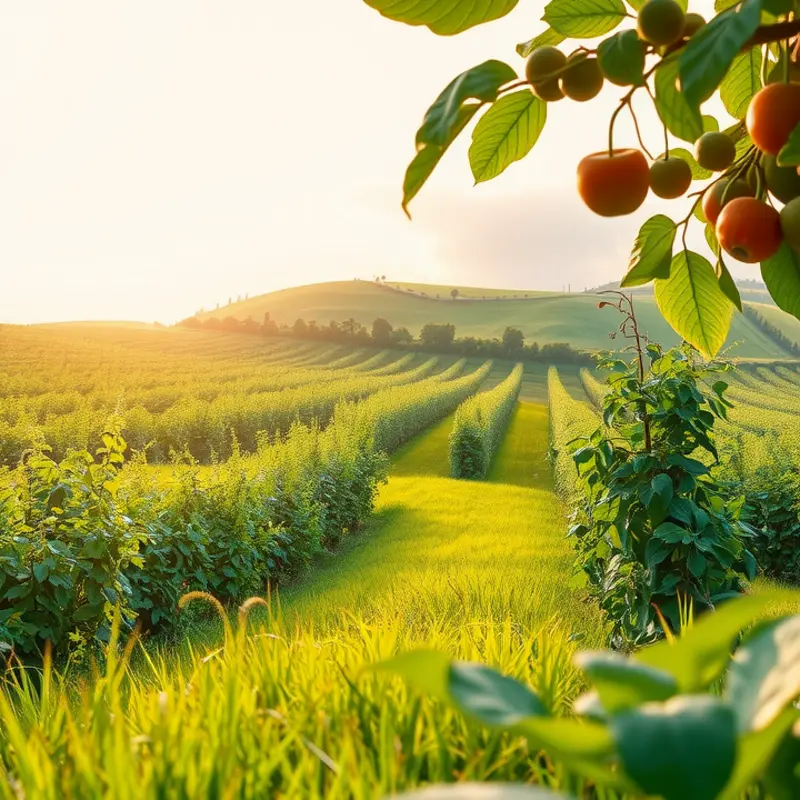Proper storage of root vegetables is essential to maintaining their freshness and nutritional value. With simple techniques, you can extend their shelf life, minimize waste, and enhance your food management at home. By understanding the specific needs of different root vegetables, you can create an effective storage system that keeps your produce crisp and ready to use. Let’s explore effective ways to make the most out of these nutrient-packed foods.
Understanding the Needs of Root Vegetables

Storing root vegetables correctly ensures they remain flavorful and nutritious over time. Carrots, potatoes, and beets, among others, require specific storage environments to maximize their shelf life.
Carrots thrive in cold, humid conditions. They should be stored in the refrigerator, ideally between 32°F to 40°F, with humidity levels at around 95%. To prevent them from becoming limp, place carrots in a perforated plastic bag. This setup maintains the necessary moisture while allowing air to circulate. It is advisable to remove any greens before storage, as they draw moisture from the roots, reducing longevity.
For potatoes, a cool, dark, and dry environment is essential. Potatoes should be stored in a well-ventilated container, like a woven basket or a slatted crate, at temperatures between 45°F to 55°F. Exposure to light encourages sprouting and greening, which is detrimental to their taste and safety. Avoid storing potatoes in the refrigerator, as colder temperatures convert their starch into sugar, altering flavor and texture. Instead, aim to keep them in a pantry or a similar setting where environmental stability is maintained.
Beets also benefit from cool and slightly humid conditions. Storing them in the crisper drawer of a refrigerator at temperatures between 32°F to 40°F preserves their firmness. Like carrots, beets should have their greens removed before storage. If your refrigerator does not have a humidity-controlled crisper, placing beets in a perforated plastic bag can help maintain appropriate moisture.
Understanding the nuances of each root vegetable’s needs can significantly reduce waste and improve meal quality. Furthermore, aligning storage practices with eco-friendly solutions can further enhance sustainability in the kitchen. To explore ways to make your kitchen more eco-smart, consider checking out eco-friendly kitchen storage techniques. Implementing these methods not only preserves the integrity and taste of root vegetables but also supports a sustainable lifestyle, minimizing environmental impact through informed choices.
Effective Storage Techniques for Root Vegetables

Root vegetables are versatile and nutritious staples, making them essential for any pantry. Proper storage techniques can preserve their freshness and reduce waste significantly. The importance of temperature control, humidity management, and using suitable containers cannot be overstated.
Most root vegetables prefer a cool, dark environment. Basements or unheated cellars work best because they offer stable temperatures. Aim for temperatures between 32°F to 50°F. Beets, carrots, and parsnips thrive in these conditions. Maintaining high humidity is equally crucial as it prevents dehydration. Store your roots in perforated plastic bags with damp sand or moss to retain moisture.
Certain root vegetables, such as onions and garlic, require different conditions. They fare better in dry, low-humidity environments. Place these in mesh bags to ensure adequate air circulation, preventing mold and sprouting.
Potatoes should be kept in a cool, dark area; however, they need protection from excess humidity to avoid rot. Avoid refrigeration as this converts their starches into sugar, altering flavor. Store potatoes in paper bags or burlap sacks for optimal airflow and temperature management.
Understanding which root vegetables can cohabit is important. For instance, onions and garlic produce gas that accelerates the spoilage of potatoes and other vegetables. Keeping these separate can reduce spoilage significantly.
Another vital consideration is the condition of your root vegetables prior to storage. Remove greens from carrots, beets, and turnips, leaving about an inch of stem. This prevents these greens from drawing moisture from the root, extending their shelf life.
Wrap each vegetable in paper towels to absorb excess moisture before placing them in containers. Doing so prevents rot and spoilage. Regularly inspect stored vegetables for signs of spoilage such as sprouting, wilting, or mold. Remove affected produce promptly to prevent it from spoiling the entire batch.
Implementing these strategies not only extends the life of your root vegetables but also promotes a sustainable and efficient kitchen environment. For more on sustainable storage, you might find our section on eco-smart kitchen storage helpful.
By integrating these storage techniques into your routine, you’ll notice less waste and retain the flavorful, nutritious benefits of these vital vegetables.
Final words
Storing root vegetables effectively not only helps maintain their quality but also contributes to reducing food waste. By understanding the unique requirements of each type of vegetable and implementing practical storage methods, you can enjoy their nutritional benefits for longer periods. Remember to check your stored vegetables regularly and embrace the art of food management to ensure a healthy and sustainable kitchen environment. With these tips, you’re well on your way to becoming a root vegetable storage pro.







